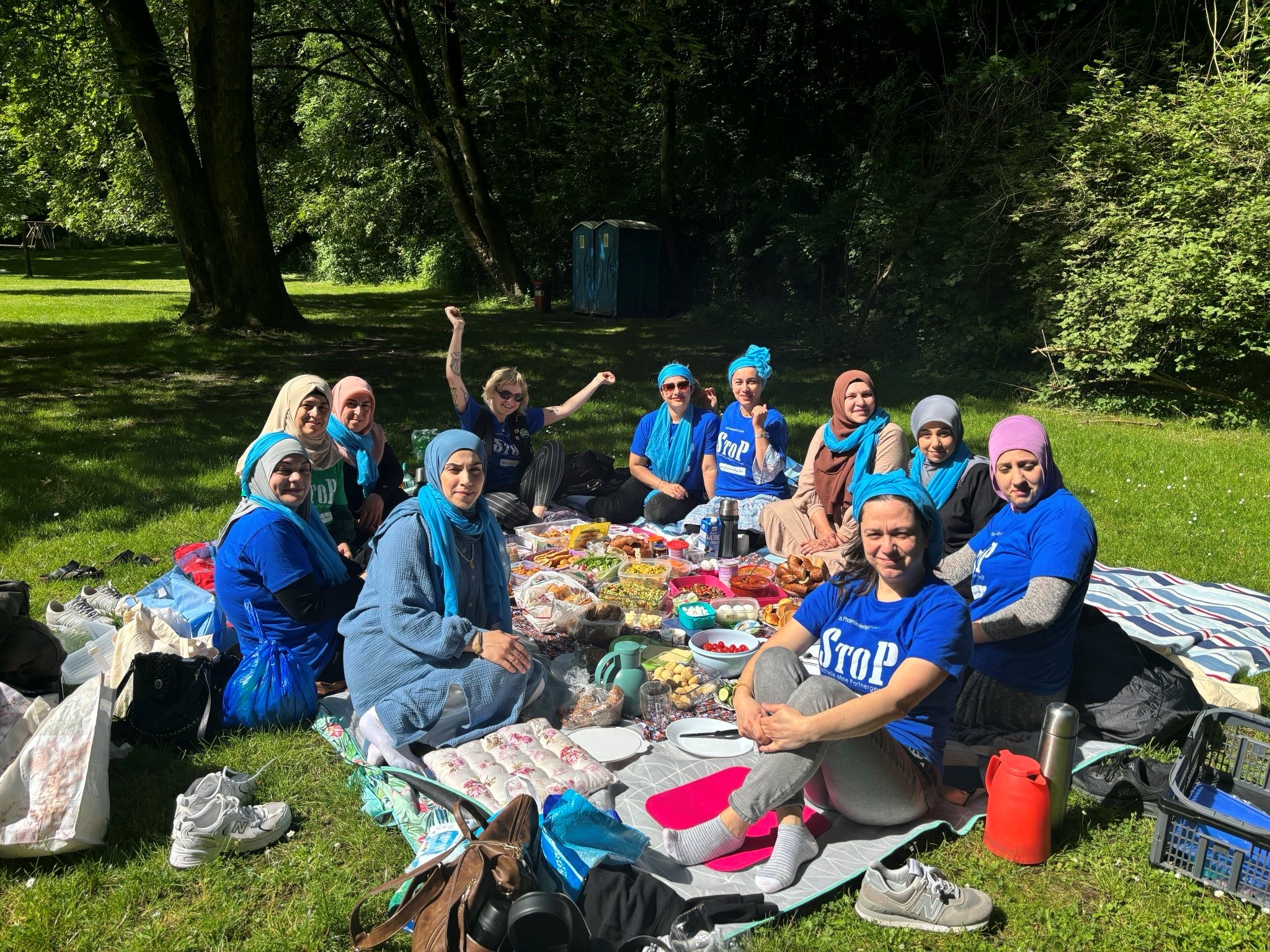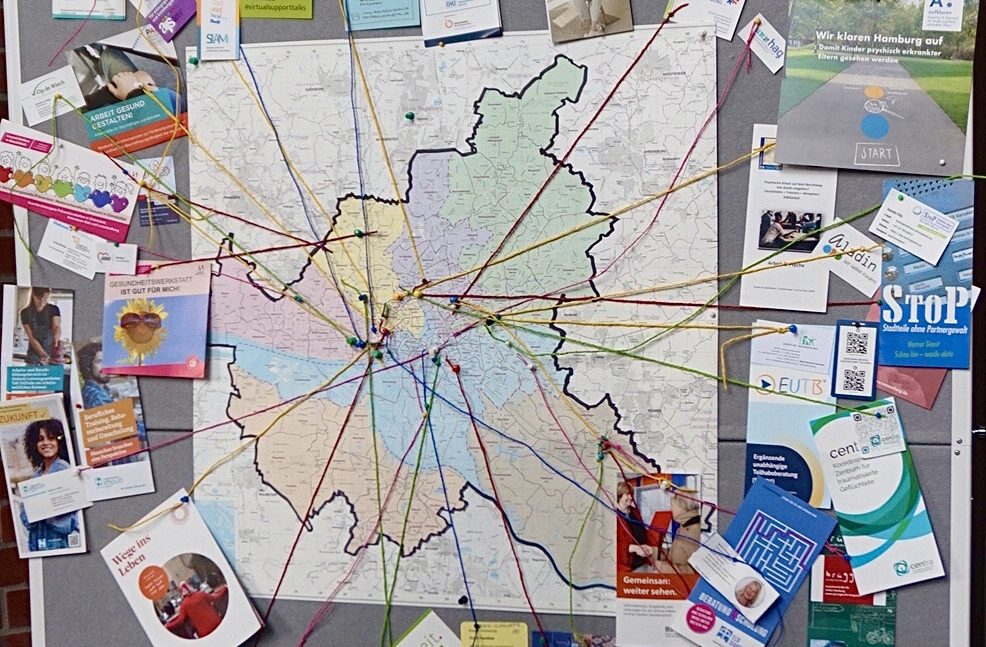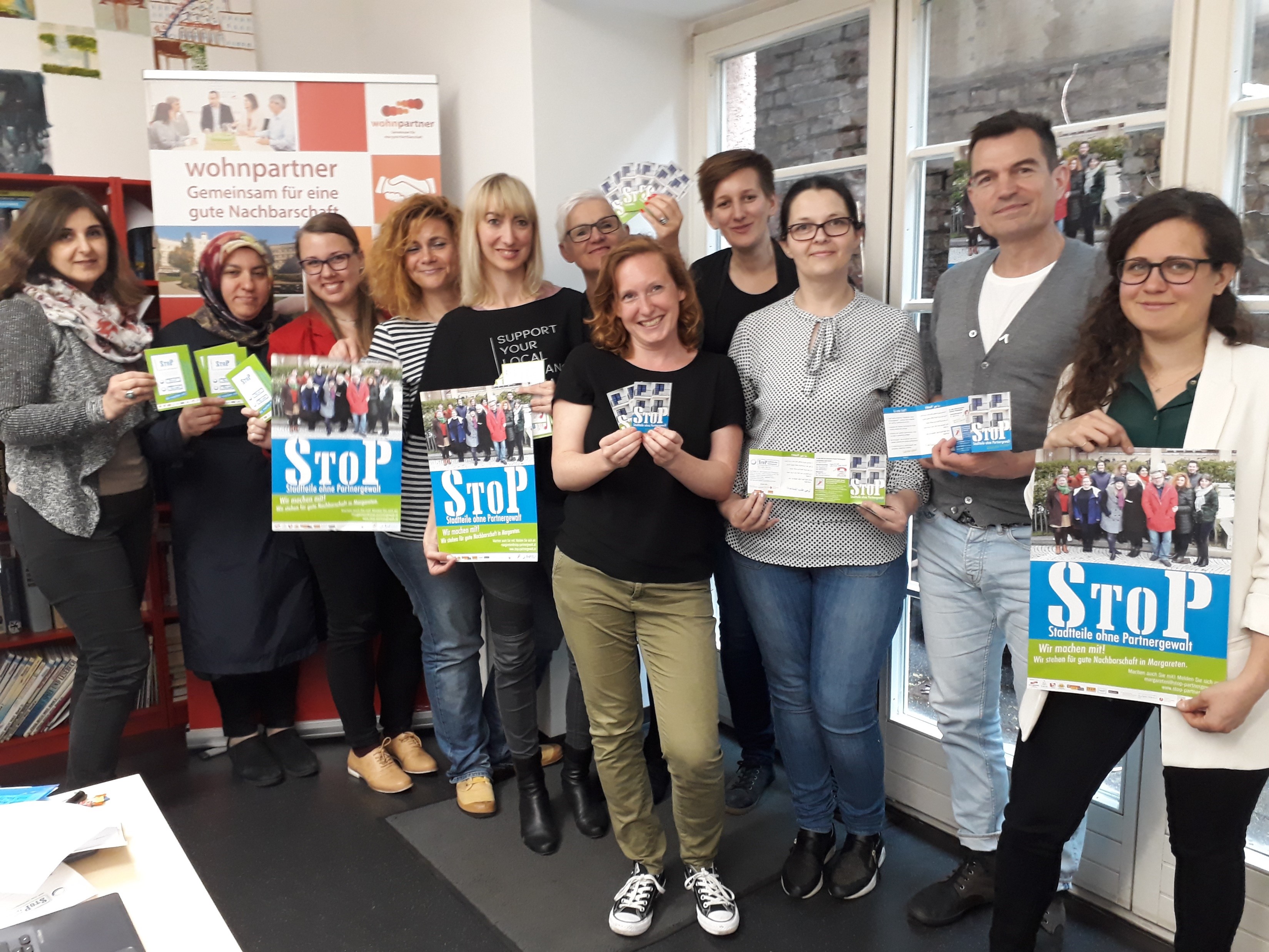Why
StoP community groups are often very diverse. Not all StoP participants meet regularly. Some people are involved in specific activities, some are deeply involved, and others provide occasional support. StoP coordinators are full-time staff, while neighbors are volunteers. There is often a core group of active people at the center. They plan activities, talk to others – a lot of things wouldn't happen without them. But even here there are often different perspectives or motivations: Some want to talk more and exchange ideas and tend to shy away from the public eye, while others want to do much more, go out into the open and take action. This can lead to tension if different interests are not addressed, and solutions are not sought together. Roles and tasks within the group can change from “stable” to “rigid”. Hierarchies and dominance may be appropriate for a particular group situation, but often do a disservice to the group/project in the long run. Groups often develop a sense of self-evidence, fixed perspectives, and fixed interactions. These work for some people at some time. In the long run, however, they usually lead to diminishing creativity, lack of flexibility and openness, or even frustration and crisis.
Groups therefore tend to enter a crisis stage after the ‘performance’ phase (group development stages). Special attention should be paid to this phase to ensure that a slowdown in activities does not lead to the dissolution of the group after the peak phase of group-led activities. The goal is to emerge stronger from a possible crisis or to regain strength after a phase of (many or intensive) activities.
The establishment of a regular event where people reflect on the last period and plan for the next, where space is created for wishes or criticism of the group itself, and where it is possible to celebrate what has been achieved together, can prevent crises in groups.
“We have a crisis: crisis does not mean a big catastrophe, but first of all only that there is a problem within the group relations that has not yet been solved, perhaps not even recognized. This problem can manifest itself as an ongoing conflict, but also as boredom, disinterest, dissatisfaction, and silence. The crisis often manifests itself in a “trigger” that is not necessarily identical with the problem. So the first step is to identify the problem. Has something specific happened? Have certain expectations of the members not been met for some time? Has a conflict been swept under the rug? This root cause analysis may reveal that there is more than one problem. The entire group should be involved in interpreting the problem(s), and even more so in finding solutions. The coordinators should facilitate this clarification process, i.e., encourage discussion or suggest other methods for dealing with the problem. It is necessary to strike a balance between talking and doing.”
What
Hold periodic events to review and look ahead. The frequency will depend on the intensity of the group and its activities. However, it should take place at least once a year. It is a good idea to divide the event into two parts: After reflection and planning, it is important to celebrate the small and big successes of the last period, possibly together with new interested parties, network partners or the public.
In addition to the reflection on activities, group, individuals and goals, the person preparing the meeting should - at least mentally - locate the current status of the StoP project within the 8 steps of StoP, or consider whether there is a need to plan some aspects of the steps for the near future (e.g. if the groups have changed or tend to see everything as rather complicated and difficult, activities should be carried out that highlight the resources of the group and possibly the network and the district). It may also be that knowledge of the district has been lost because many new residents have moved into the district. In this case, it is worthwhile for the group to use the methods of step 2 and conduct a new round of assessments. When assessing the current situation in the specific StoP project, it is important to remember that StoP coordinators, as paid staff, have a different role and perspective on activities or needs than volunteer neighbors.
It can be helpful to follow a period of regeneration after a period of many activities or efforts. This may mean consciously planning fewer activities before or after the “Reflection and Celebration” event, or arranging opportunities to recharge.
Objectives
- Strengthen community group cohesion and activities
- Celebrate successes
- Express appreciation for the voluntary commitment
- Develop a program and goals for the near future

Facilitators guide
Reflection aspects:
- In terms of activities: e.g. goal achievement, satisfaction, number, effort, motivation, diversity (forms, topics, target groups, objectives, ...)
- In terms of the group: e.g. communication, decision making, distribution of tasks/roles/responsibilities, procedures/meeting topics, dissatisfaction/desires, conflict resolution processes, support and contact with each other.
- In terms of individuals: resources, recognition, growth potential.
- In terms of goals: What activities were used to implement the goals in the last period? Are the previously formulated goals still appropriate? Are changes or additions necessary in light of the experiences of the last period? Is our vision statement (preferably in writing) still up to date? It is important that reflection does not only take place through methods of “speaking and listening”. A broader variety of approaches helps both to address people in their diversity and to invite them to participate in the process, as well as to allow different ideas and aspects to emerge in individuals. The design of the event should be based on the current situation of the group: Is there a need for deeper discussion? Is there a need to get to know each other better? Are there conflicts? Do we need to have fun experiences in between? How can all voices be heard? How can creativity be expressed?
Time and people needed
Time: min. 3 hours, could also last a full day
People: StoP community group
Target groups
StoP community group,network of cooperation partners, stakeholders
Steps / Action
Preparation
- Preparation in the neighborhood group: How should the festive part of the evening be organized? (Invite the network? Catering? Success stories? Etc.)
- Collection of pictures from the activities of the last period
- Invitation
- Preparation of reflection methods
- Preparation of planning procedures
Action
- Presentation of the activities of the last period
- Evaluate the activities with the chosen methods
- Evaluate the group cooperation/cohesion with the chosen methods
- Evaluate the link between the activities and the goals previously formulated by the group with the chosen methods
- Plan activities based on the results of reflection with the chosen methods
- (Re)Formulating group-related projects with the chosen methods
- If necessary, implement methods for (re-)formulating the goals of the StoP community group
- Opening of the celebratory part
- Appreciative speech (or other form of communication) about the activities, the group and individuals in the last period
- Appreciative mention of successful collaborations and network partners, if applicable.
- Presentation of plans and goals for the next period
- 'Congratulations' ceremony/ritual
- Food and music!
Material
- 2 rooms (one for the group meeting and one for celebrating)
- Chairs, Flipcharts, Pin boards
- Presentation with pictures of activities from the last period Workshop material (depending on the method: pens, cards, flipchart paper, adhesive tape, ...)
- Music (sound system)
- Food and drinks, incl. crockery and cutlery
- Decoration material
- “Congratulations” ritual/ceremony (champagne, drum roll, applause, ...)
“To achieve this praxis, however, it is necessary to trust in the oppressed and in their ability to reason. Whoever lacks this trust will fail to initiate (or will abandon) dialogue, reflection, and communication, and will fall into using slogans, communiques, monologues, and instructions. Superficial conversions to the cause of liberation carry this danger.”
References
-
Freire, Paolo (2005/1970): Pedagogy of the Oppressed. New York: The Continuum International Publishing Group Inc.










